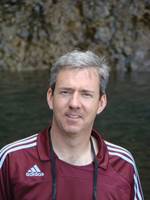The green challenge
Hugo Giffard, engineer and continuous improvement manager at LM Wind Power (Canada) Inc. (Gaspé, Quebec, Canada) discusses the need for recycling partners in his company's efforts to deal responsibly with waste glass-fiber reinforcements.
The green movement is in full swing as renewable energy grows in importance. The company I work for, LM Wind Power, is one of the leaders in the wind industry, and we have had an important role in the expansion of wind energy since 1978. Wind turbine blades contribute to making clean energy, but we are a manufacturing company, which means we cannot help having an impact on the environment. We have already done a lot to reduce that impact, but we can do more.
This past year LM Wind Power, including the Gaspé, Quebec, facility where I manage engineering and continuous improvement, underwent ISO 14001 certification. What that means is that our enterprise has adopted an environmental management system to identify and control the environmental impact of our activities, products and services. It requires the company to implement a systematic, strategic approach to setting environmental objectives and targets to reduce our environmental footprint. As part of compliance with the new environmental management system, LM Wind Power undertook an initiative to reduce waste and make our manufacturing more efficient — to reduce, reuse and recycle. The name of the program is Fuel for Growth.
The goals set by the company as part of Fuel for Growth are very aggressive, and we’re working hard to meet them. In essence, we need to reduce to a minimum the waste generated during construction of blades. To do this, changes have included implementation of better methods to avoid waste in items such as fiber and adhesives and reduce consumption of consumables for items like disposable personal protective suits. For example, we’ve changed our work area layout so that the suits can be removed and hung up during breaks and worn again if they are not damaged. So the goals of reduce and reuse are within reach, and our efforts are having a measurable impact on the company’s bottom line.
However, the recycle part of Fuel for Growth is a more difficult issue. Our Gaspé facility is attempting to find a company — any company — with which we can partner to recycle our waste dry fiberglass material left after the layup process. Material forms include mats, unidirectional and woven fabrics and some chopped roving. Unfortunately, at present we are paying to have the material hauled to a landfill — clearly an undesirable situation. One of our facilities in Spain has actually found a nearby company to take waste fiberglass to make fiberglass tubular products, such as broom handles. Our facility has worked with the University of Sherbrooke in Quebec, where students are analyzing samples of our waste fibers to determine their suitability for industrial additives in the making of, for example, fiber-reinforced concrete. But for us, the industrial base around Gaspé is very limited because of our remote location north of New Brunswick and on Quebec’s Atlantic coast, which admittedly complicates pickup and transportation logistics.
Yet there are a lot of facilities in the same situation as we are, far from metropolitan centers. That shouldn’t necessarily make recycling efforts impossible. And yes, we recognize that the lower costs for glass as compared to carbon, for which there are currently numerous recycling efforts, makes it harder to develop a profitable scheme. But when we in the composites industry are in the business of selling energy conservation, I believe it is in our own best interests to follow through and conserve energy and resources. There has to be a better system — perhaps fiber companies and material suppliers can offer pickup services as well as delivery, and they can be the manufacturers’ partners in helping to make recycling a reality. I look forward to hearing ideas from readers of this magazine.
Editor’s note: CT readers may contact Mr. Giffard at hug@lmwindpower.com.
Related Content
Plant tour: Daher Shap’in TechCenter and composites production plant, Saint-Aignan-de-Grandlieu, France
Co-located R&D and production advance OOA thermosets, thermoplastics, welding, recycling and digital technologies for faster processing and certification of lighter, more sustainable composites.
Read MoreCirculinQ: Glass fiber, recycled plastic turn paving into climate solutions
Durable, modular paving system from recycled composite filters, collects, infiltrates stormwater to reduce flooding and recharge local aquifers.
Read MoreNovel composite technology replaces welded joints in tubular structures
The Tree Composites TC-joint replaces traditional welding in jacket foundations for offshore wind turbine generator applications, advancing the world’s quest for fast, sustainable energy deployment.
Read MoreRecycling hydrogen tanks to produce automotive structural components
Voith Composites and partners develop recycling solutions for hydrogen storage tanks and manufacturing methods to produce automotive parts from the recycled materials.
Read MoreRead Next
Gauging the green demand
Composites Technology's editor-in-chief Jeff Sloan suggests a green bottom-line proposition: if your customers demand products that allow them to minimize their effect on the environment, then it behooves you to develop such products.
Read MoreThat "new car" smell: Sniffing out the regulatory trends
Environmental consultant Pat Hooper contends that growing concern about auto interior air quality is the elephant in the room that the composites industry can't afford to ignore.
Read MoreVIDEO: High-volume processing for fiberglass components
Cannon Ergos, a company specializing in high-ton presses and equipment for composites fabrication and plastics processing, displayed automotive and industrial components at CAMX 2024.
Read More
























